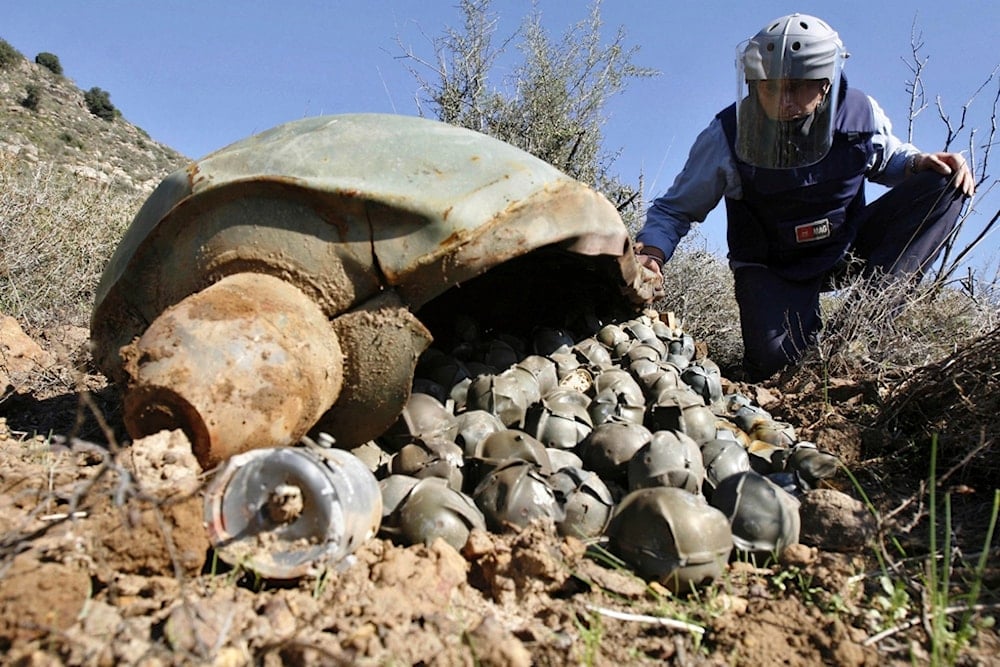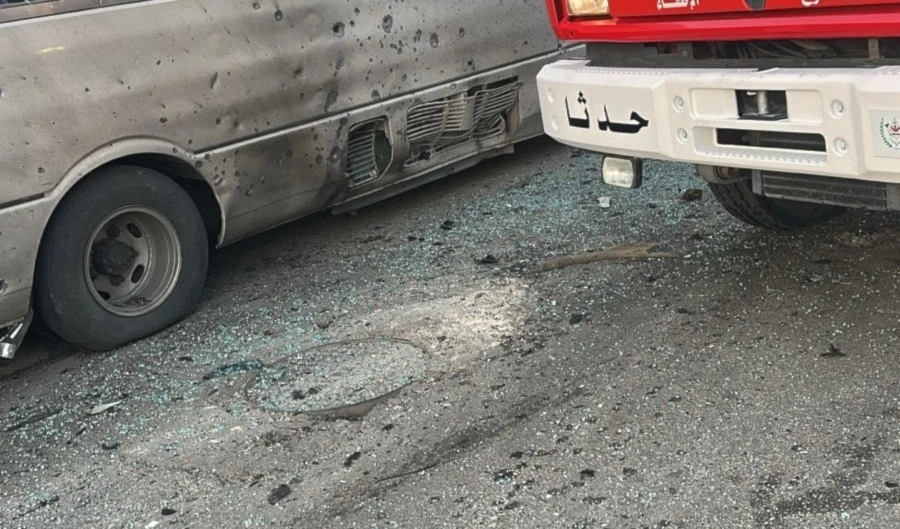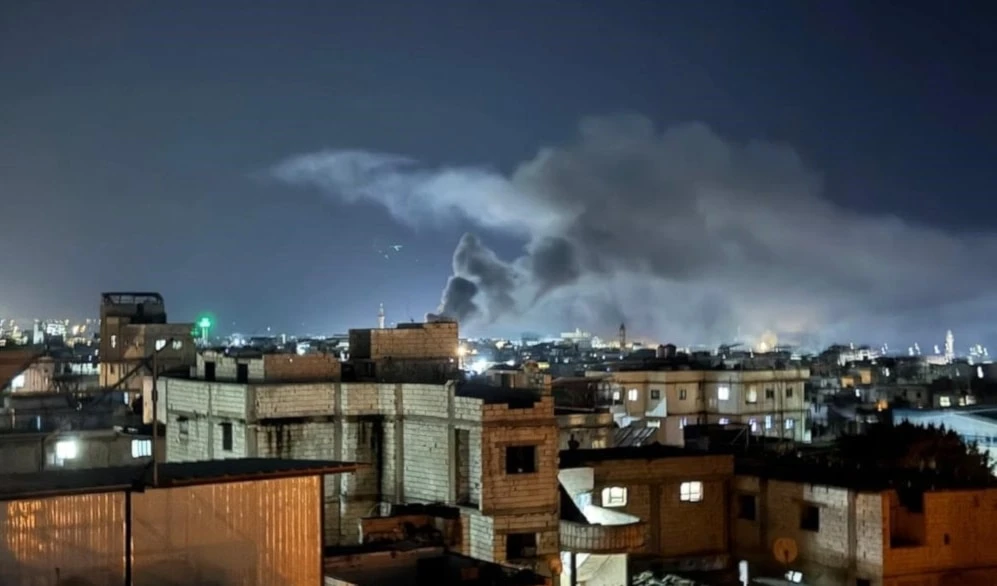'Israel' used new, banned cluster munitions in Lebanon: The Guardian
Weapons experts confirm that "Israel" used Ra’am Eitan and Barak Eitan cluster munitions in South Lebanon, raising fresh humanitarian concerns.
-

Mines Advisory Group Technical Field Manager inspecting a Cluster Bomb Unit in the southern village of Ouazaiyeh, South Lebanon, on Nov. 9, 2006, after it was dropped by "Israel" amid the war on Lebanon (AP)
"Israel" used widely prohibited cluster munitions during its latest war on Lebanon, images of munition remnants from South Lebanon reviewed by The Guardian showed.
The photos, examined by six different weapons experts, appear to show remnants of two types of Israeli cluster munitions found in three locations south of the Litani River, in the forested areas of Wadi Zibqeen, Wadi Burghuz, and Wadi Deir Siryan.
The evidence marks the first indication that "Israel" has deployed cluster munitions since the 2006 July War, and it would also be the first time "Israel" is known to have used the two newer types identified, the 155mm M999 Barak Eitan and 227mm Ra’am Eitan guided missiles.
To date, 124 countries have joined the Convention on Cluster Munitions, which bans their use, production, and transfer. "Israel" is not a party to the treaty and is not bound by it.
Tamar Gabelnick, director of the Cluster Munition Coalition, said, “We believe the use of cluster munitions is always in conflict with a military’s duty to respect international humanitarian law because of their indiscriminate nature at time of use and afterwards."
Their wide-area impact, she added, means they cannot distinguish between civilian and military targets, while unexploded bomblets continue to kill and maim civilians for decades.
'Israel' riddles Lebanon with cluster munitions
Lebanon, in particular, has a painful history with cluster munitions. "Israel" saturated the country with four million bomblets in the final days of the 2006 war, and an estimated one million failed to explode. Unexploded submunitions continue to make life perilous in the south, where more than 400 people have been killed by leftover bomblets since 2006.
The sheer number of unexploded cluster munitions in Lebanon was one of the key drivers behind the drafting of the 2008 Convention on Cluster Munitions.
Images of remnants from the first munition, the 155mm M999 Barak Eitan, an advanced anti-personnel cluster round produced by Elbit Systems in 2019, were verified by six weapons experts, including Brian Castner, head of crisis research at Amnesty International, and the technical intelligence consultancy Armament Research Services.
Each M999 artillery shell disperses nine submunitions that explode into 1,200 tungsten fragments, according to the US Army manual for the weapon.
Images of the second munition were identified as cluster remnants by five weapons experts, although most were unable to determine the exact model due to limited open-source data on that specific rocket.
Two analysts, including Jonzen Jones, said the weapon was a 227mm Ra’am Eitan guided missile, a newer type of cluster munition developed by Elbit Systems, with the batch code indicating that this rocket was produced in 2017.
On-the-ground facts refute Israeli claims
Israeli media have described the Ra’am Eitan as a guided missile carrying 64 submunitions that spread over a wide area and kill anyone within it. According to an Israeli army press statement issued in February 2024, Israeli forces deployed along the northern border had been equipped with Ra’am Eitan missiles in preparation for fighting Hezbollah.
Israeli media reports say both types of cluster munitions recovered in Lebanon were developed in recent years to reduce the number of unexploded submunitions, with claims that the Ra’am Eitan has a “failure rate” of just 0.01%, but all previous instances of similar rates were proven false.
"Israel" claims it pursued these designs after facing widespread domestic and international criticism for its heavy use of cluster munitions in 2006, seeking a way to continue deploying them while minimizing civilian harm.
However, Gabelnick and other weapons experts warn that manufacturer-stated failure rates are frequently far lower than what occurs in real-world use. Israeli Military Industries claimed the M85 submunition used in 2006 had a failure rate of 0.06%, but later analyses suggested it was closer to 10%.
Human rights groups say it is impossible to use cluster munitions in any way that meaningfully reduces civilian harm.
“Cluster munitions are banned internationally for a reason,” Castner said. “Their use is inherently indiscriminate, there is no lawful or responsible way to deploy them, and civilians bear the greatest burden because these weapons remain deadly for decades.”

 4 Min Read
4 Min Read










